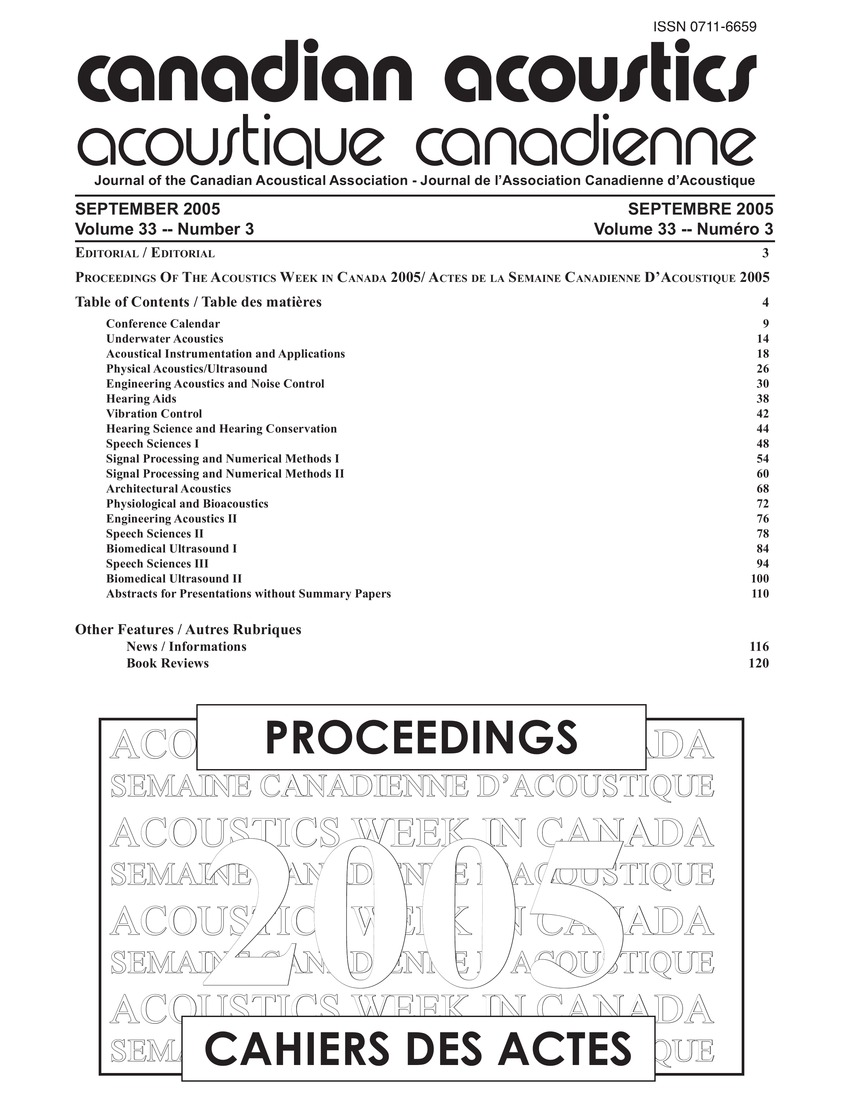Finite-element modelling of acoustic wave scattering from fluid, rigid and elastic objects
Keywords:
Acoustic wave propagation, Computation theory, Computer software, Elasticity, Finite element method, Natural frequencies, Rigidity, 3-D arbitrary-shaped structures, Acoustic scattering models, Elastic spheres, Finite-element modelingAbstract
A finite element model (FEM) of acoustic wave propagation through 3-D arbitrary-shaped structures is developed to solve the problem of high frequency acoustic scattering. The FEMLAB® software package was used to develop and solve acoustic scattering models from fluid, rigid, and elastic spheres immersed in a fluid medium, for which analytical solutions are available. The entire computation domain is modeled as a sphere filled with fluid domains. It is found that the FEM provided accurate predictions of wave scattering by three types of scatterers, fluid, rigid immovable, and elastic.Additional Files
Published
How to Cite
Issue
Section
License
Author Licensing Addendum
This Licensing Addendum ("Addendum") is entered into between the undersigned Author(s) and Canadian Acoustics journal published by the Canadian Acoustical Association (hereinafter referred to as the "Publisher"). The Author(s) and the Publisher agree as follows:
-
Retained Rights: The Author(s) retain(s) the following rights:
- The right to reproduce, distribute, and publicly display the Work on the Author's personal website or the website of the Author's institution.
- The right to use the Work in the Author's teaching activities and presentations.
- The right to include the Work in a compilation for the Author's personal use, not for sale.
-
Grant of License: The Author(s) grant(s) to the Publisher a worldwide exclusive license to publish, reproduce, distribute, and display the Work in Canadian Acoustics and any other formats and media deemed appropriate by the Publisher.
-
Attribution: The Publisher agrees to include proper attribution to the Author(s) in all publications and reproductions of the Work.
-
No Conflict: This Addendum is intended to be in harmony with, and not in conflict with, the terms and conditions of the original agreement entered into between the Author(s) and the Publisher.
-
Copyright Clause: Copyright on articles is held by the Author(s). The corresponding Author has the right to grant on behalf of all Authors and does grant on behalf of all Authors, a worldwide exclusive license to the Publisher and its licensees in perpetuity, in all forms, formats, and media (whether known now or created in the future), including but not limited to the rights to publish, reproduce, distribute, display, store, translate, create adaptations, reprints, include within collections, and create summaries, extracts, and/or abstracts of the Contribution.


